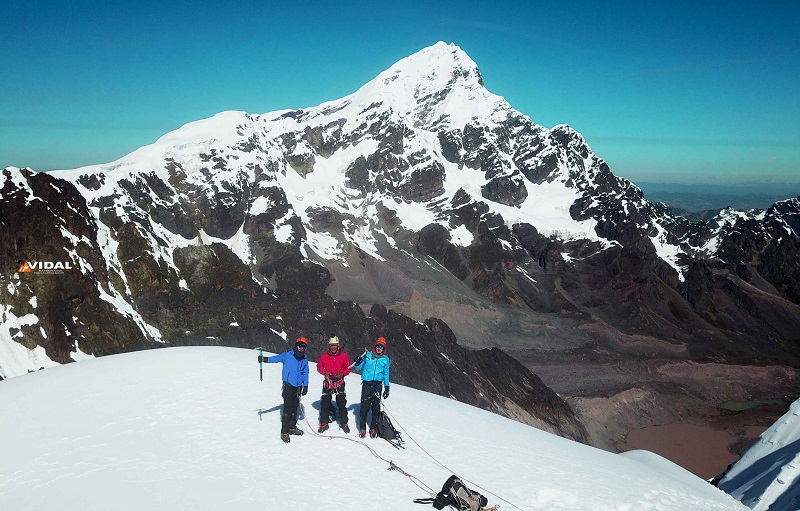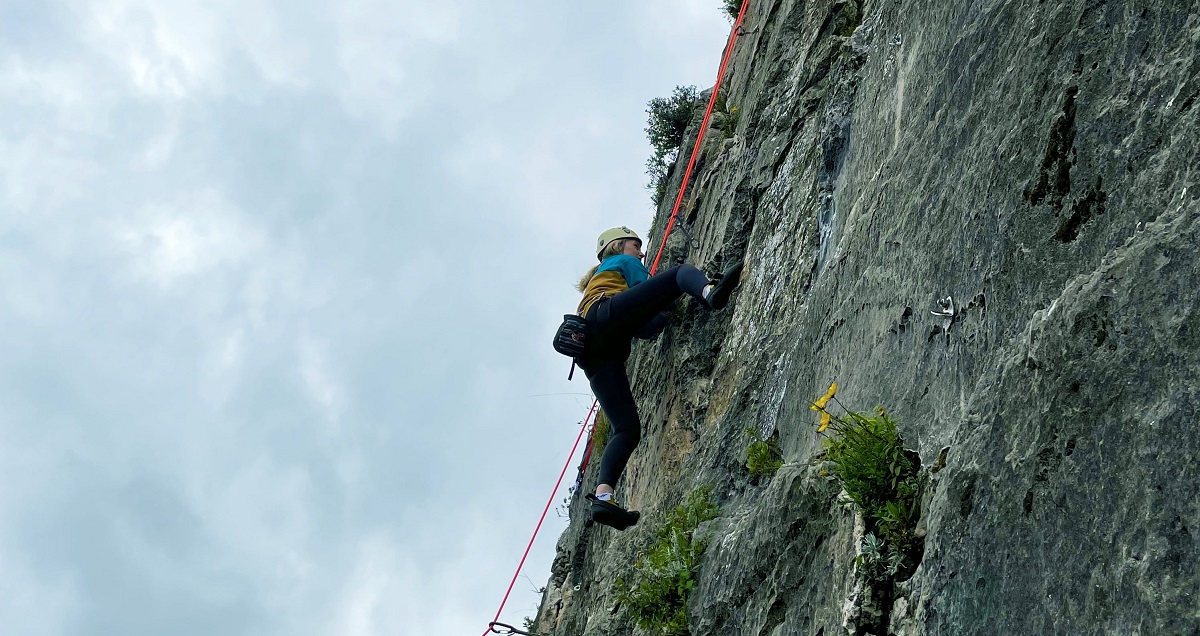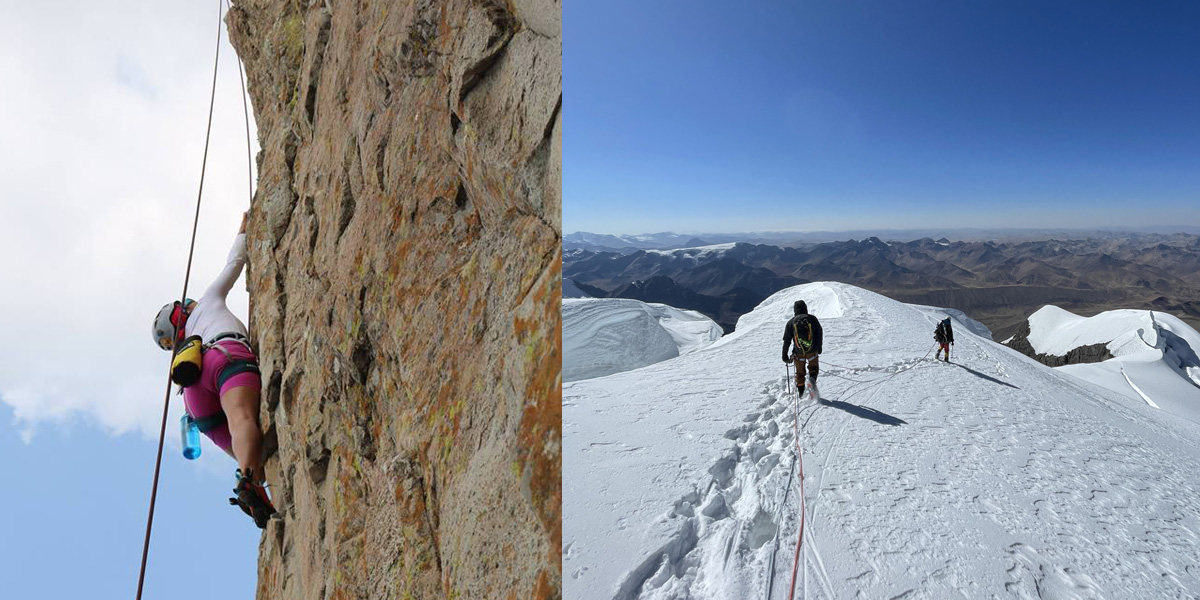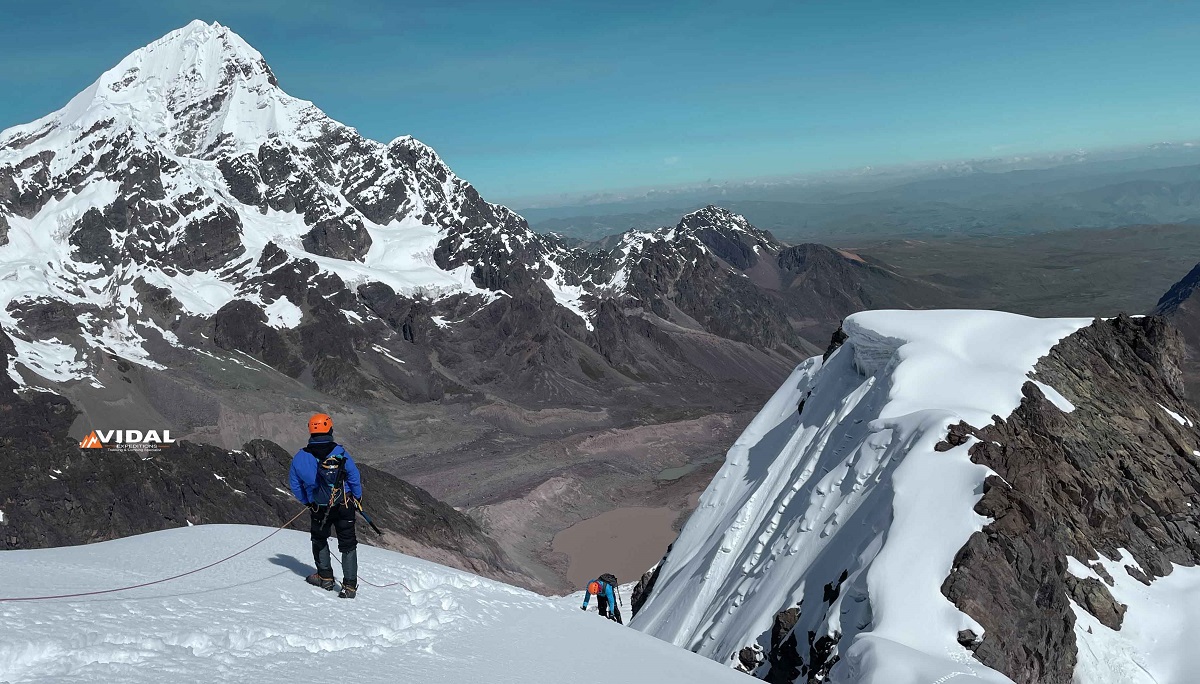The Rock climbing is a physically and mentally demanding sport, one that often tests a climber's strength, endurance, agility, and balance, along with mental control. Knowledge of proper climbing techniques and the use of specialized climbing equipment are crucial for the safe completion of routes.
The rock climbing in Cusco has grown considerably over the last few years, according to the large group of adventurers who come to Cusco to explore and practice this sport. Cusco, as it is located in the middle of the Peruvian Andes, offers great variety for rock climbing where everyone could practice this nice sport, with routes of different levels for beginners who want to learn and experience rock climbing, and routes that are already equipped for locals and foreigners.
Top Rope Climbing: also knows as top-roping, this is most recommended for beginners because this style offers a safety for the person who is trying to climb a wall. It is the most common style used at indoor climbing walls and is also used in situations where other methods would be unsafe or environmentally damaging.
Most beginner climbers will start out top roping. This will either be indoors at a climbing gym, or outdoors on a climbing course or taster session with an instructor.
Top roping uses ropes that run through pre-existing or newly placed anchors at the top of a climbing route. One end of the rope is attached to the climber, and the other end is attached to another person: the belayer. The belayer takes in the excess rope as the climber ascends and ensures that should they fall off the rock, they will be "caught" by the rope (which runs through a belay device attached to their harness).
In climbing gyms, top ropes are already set up by the climbing elves. Outdoor top rope climbs aren’t quite so magical, unfortunately. They can be set up by a more experienced climber who will lead the climb first. Alternatively, the top of some outdoor climbing routes can be accessed on foot, and the rope can be set up from above.

Sport Climbing Climbing: Is a type of lead climbing. Just as with lead climbing, there are fixed bolts with rings in the rock on the wall to protect the climber from falling. These bolts and rings will have been set by the leader and are usually between 10 and 15 feet apart from each other. The climber will use a quickdraw (also known as an extender) to clip the rope attached to them onto the bolt attached to the rock. A quickdraw is two carabiners (a looped, spring-loaded shackle) that are connected by a thick piece of nylon. At the end of the route, a belay anchor will usually be waiting for the climber, having been set by the leader. A belay anchor consists of two or three bolts and rappel rings.
Sometimes sport climbs can be “rap-bolted”. Rap-bolting is a way to bolt into the rock, but instead of bolting as they climb upwards, the leader will bolt as they rappel down the wall.
The goal of sport climbing is to focus on technique, strength, cardiovascular activity, and gymnastics rather than some climbing methods, which focus on adventure and risk as their major factors (for example, free-soloing and mountaineering).
Many people who start lead climbing are more inclined to go for sport climbing instead of trad climbing due to convenience. Less equipment is needed in sport climbing, there isn’t as much to remember regarding the anchors into the wall, it’s easier than trad climbing but it’s still quite challenging, and it’s more of a workout for the body than the mind.
Bouldering: Bouldering is a type of climbing that doesn’t require a rope and is a solo activity. Unlike lead climbing (or similar) there is no one else on the wall helping you through your climb in any way (other than words of encouragement). Duo bouldering problems, while fun, are very rare to find.
There are indoor bouldering gyms and outdoor bouldering areas all around the world. The maximum height of your usual bouldering wall is around 4 meters high whereas the average height is usually around 3 meters. Indoor bouldering gyms offer different graded climbs and have a massive safety mat for when a climber falls. Outdoor bouldering will usually require the climber brings crash pads for safety when they fall.
Some shoes are specifically designed for bouldering because of their speciality for short, steep routes, or precision on overhangs. Bouldering is one of the most commonly practised forms of climbing.

The Mountain Climb in Peru offers the best bang for your buck in comparison to other great ranges of the world. While mountains like Denali or the Himalayas can cost over $10,000 for an expedition and take over a month, Peru has the most accessible peaks over 6,000 meters / 20,000 feet anywhere in the world and is quite cheap in comparison. The scenery is loaded with colors contrasting the green pastures, turquoise lagoons, and brilliant white peaks, not just gray rock on your approach to base camp. Several valleys in the Cordillera Blanca offer the opportunity to climb big peaks from the same base camp. This lets you do more climbing for less money and time invested.
The most popular mountains that can be climbed in Cusco are the Qampa Mountain (5,520 meters/18,110 feet) and the Ausangate Mountain (6,384 meters/20,944 feet), the last of which is considered the highest mountain in the entire Cusco region. However, if you are a mountain lover and want to go far, we have more mountains that can be climbed in a two-day tour. Cusco has some Andean range, which have snow-capped peaks from 5,200 meters to 6,384 meters.
Acclimatisation: Good acclimatisation to the altitude is important before attempting any climbing in the Cordillera Vilcanota. You are sleeping & climbing above 5000m and this is very demanding and tiring for the body. Without sufficient acclimatisation the chances of becoming ill with altitude issues on the mountain are high, or you may experience a complete loss of energy and be unable to continue with the climb.
We always recommend an acclimatisation trek of minimum 4 days before departing to climb. We can advise on a suitable acclimatization program including day hikes and an acclimatisation trek. For climbing 6000m or technical peaks we additionally recommend a “warm up” climb of a 5000m peak for extra acclimatisation and strength.
Dates & Groups: We do not have fixed departure dates for our climbing trips, but instead organise them on demand to suit clients travel plans. If you would like to join up with other people to have some company and to share costs, we can advertise your trip dates on our Join a Group Page
Support & Safety
Guides: All climbs are led by a qualified & licensed UIAGM International Mountain Guide. Assistant guides are licensed aspirant guides, members of Peruvian Mountain Guides Association. English speaking guides are available. Our guides are well trained to climb the Cordilllera Vilcanota and trained annually in different courses such as rescue, first aid kit, WFA, and safety
Evacuation: Climbing Groups are organised so that in the event of an accident, illness or tiredness there are always sufficient qualified climbing staff on the mountain to effect a rescue and / or evacuate clients safely back down the mountain
Guides have first aid training and carry a first aid kit & there is an emergency stretcher at base camp; We have a company evacuation policy and the guides are trained in what to do. There is 24 hours communication to our office from where an evacuation will be co-ordinated. If necessary a rescue team from our company will be arranged
There is no helicopter rescue service in the Cordillera Vilcanota
Mobile phone coverage is at base camp on many climbs or there is emergency radio contact from base camps. On technical peaks where there is not base camp communication or no mobile phone coverage up on the mountain we have a sat phone. Guide has walkie talkie communication with base camp
Glacier Conditions, Weather & Time to Go
The months when there is generally more settled weather are from May to September, The safer times to be climbing peaks depends on the altitude of the peak and the technical difficulty, 5000m peaks and non-technical peaks can be climbed from May through to September. Low season climbing (October to April) is also possible, but summit success can be subject to good weather.
6000m peaks and technical peaks generally are in better condition from around mid-June through to late August but some peaks are considered safe to attempt only in July & August. Global warming is causing weather conditions to be less predictable than in the past and in recent years there have been periods of bad weather and high winds during the so-called “dry” months of June, July & August. It cannot be guaranteed that there will be good climbing weather during the months of the recognised climbing season. High mountain weather is always volatile and you need to be prepared for sudden weather changes.
Glaciers in the Andes are retreating rapidly, with some glaciers that were climbed 30 years ago having now completely disappeared. This is causing conditions on the ice to change rapidly. This means that the routes used and the conditions on all the peaks are changing each year and even each month. The descriptions we have given are general only, and the routes used, conditions on the mountain or description of the routes may change considerably on the day you are climbing. Descriptions of routes in some guide books may also be out-dated
Grading:
The grading of the climbs is an indication only of the level of difficulty. Even climbs suitable for beginner climbers are graded medium to hard to reflect that the altitude makes climbing on any Cordillera Vilcanota peak physically demanding. Although many guidebooks describe some peaks as being “trekkers peaks” the approaches to all the mountains involve a steep & challenging hike up through moraine rock to reach the glacier and often there are short sections of steep climbing on ice even on the so-called “easier / beginner” peaks.
We do NOT consider that any climb in the Cordillera Vilcanota can be classified as a “trekking peak”. Altitude and terrain make all climbs physically demanding. A climb should only be considered if you are well acclimatised and generally already in good physical condition.
Grades are based on the French alpine grading system.
These are a general indication only of difficulty. Routes and conditions on all mountains are changing rapidly and level of difficulty may have changed at the time you are on any mountain.
PD (moderate) – Moderate snow climbs – a rope is necessary
AD (reasonably hard) – Routes with a fair amount of difficult climbing – snow & ice experience required
D (hard) – A reasonable amount of serious climbs of snow & ice with pitches up to severe standards
TD (very hard) – Very difficult, long serious climbs













